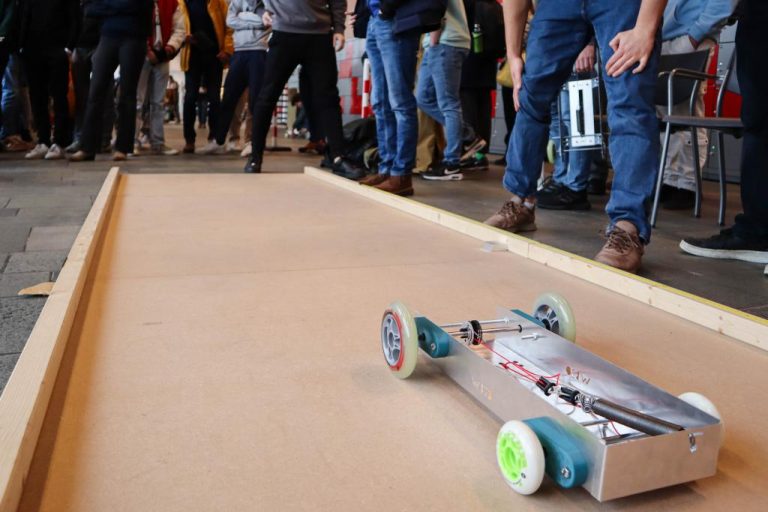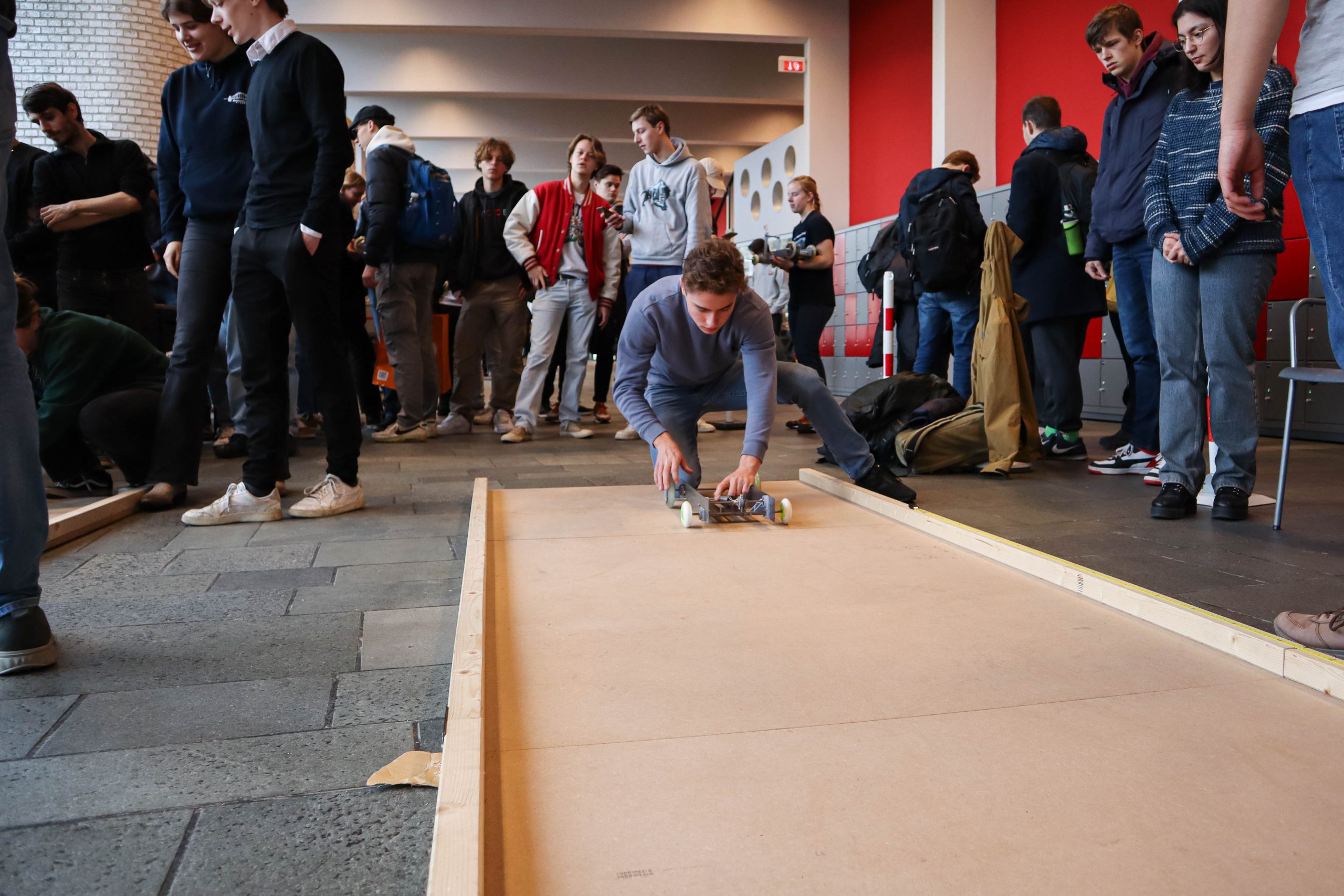First-year mechanical engineering students tested their home-made RET cars on Monday. Their carts had to drive off, brake and return in reverse. Who made the best design?
Each of the 127 carts that appeared at the start was built with care. (Photo: Justyna Botor)
Some 800 students, divided into 127 groups, appeared at the starting line of the two race tracks in the Faculty of Mechanical Engineering, Maritime Engineering and Technical Materials Engineering (3mE) on Monday. In their hands, the design they had been working on for the past eight weeks: a cart that drives itself, brakes, and, like a boomerang, comes back towards the starting line. Whoever covers the longest distance and returns closest to the starting line wins.
The trolleys must meet a number of criteria. The distance between the front and rear axles must be up to 40 centimetres, and the mass of the carts two kilograms or less. A spring has to be used for acceleration, for braking and reversing, a spring, a weight or a flywheel. “Fewer choices lead to better results,” is teacher Menno Broers’ experience. “As they don’t waste time weighing up alternatives, they can quickly concentrate on their design and on building it.”
4.58 metres
Meanwhile groups WB024 stands at the starting line with their cart. It has a symmetrical construction with two torsion springs, levers, and strings to the front and rear axles. Before the start, one of the students pulls the trolley backwards again and again, thus applying tension to the rear torsion spring. The string pulls the lever further and further down.
As soon as she lets go, the spring drives the rear axle via the lever and the string. The lever rises and the cart gains speed. A few metres further, the front lever turns down as a string from the front axle starts pulling it in. That slows down the cart and then sets it off on the return journey. WB024’s cart covered 4.58 metres, both forwards and backwards.
(text continues below photo)


Team WB126 used one tension spring for both propulsion and energy storage. (Photo: Justyna Botor)
“If only we had this 30 years ago,” sighs Broers. In his time, the emphasis was still on theory and being able to do the assignments. “The RET-Car project (Regenerative Braking and Reversing, in Dutch) gives students a feel for materials, connections and constructions. The theory will then fall into place better later.”
“And it is a good opportunity to apply the parallel subject of strength theory,” adds Regine Vroom. She is the Coordinator of the design course. Referring to the final result, she says that “Several types of concepts had the potential to achieve the maximum score. The difference was made by neat construction, making the performance more predictable and allowing the car to be set up very precisely.”
Five teams emerged as winners with a shared maximum score of 8.77 metres reversing. These were team numbers WB033, WB038, WB048, WB058 and WB103.
Who were in the teams?
- WB033: Divya Jankie, Merlijn de Vries, Amber Ripping, Muzammil Sharif, Quinten Gouda and Corijn van den Berg.
- WB038: Soraia do Sacramento Efonge, Roy Peters, Varenka Koelemeij, Pieter Kuijlaars, Brent van Leenen and Bram Boekema.
- WB048: Daniël van Ravenhorst, Yannick Wolters, Cas Westgeest, Martijn Schouten, Boudewijn Straver, Jasper Wiessing and Nick Nguyen.
- WB058: Bauke Veenstra, Marnix van der Meer, Ivar Kuipers, Tom van Ooijen and Thijs Hijman.
- WB103: Floris Keuper, Jan-Willem Brink, Warre Knevels, Figo Spoelstra and Daan Buitenhuis.
Do you have a question or comment about this article?
j.w.wassink@tudelft.nl


Comments are closed.